Wilamowski B.M., Irwin J.D. The Industrial Electronics Handbook. Second Edition: Industrial Communication Systems
Подождите немного. Документ загружается.

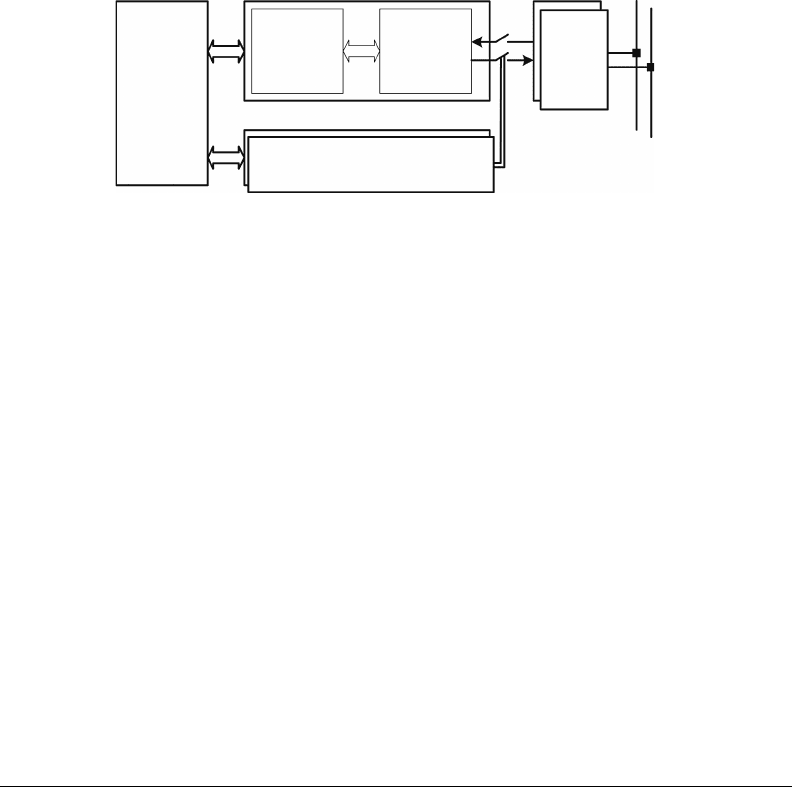
FlexRay 44-5
44.3.2 Node architecture
A.typical.node.architecture.consists.of.a.host.CPU.subsystem,.a.network.controller,.and.bus.drivers.
for.the.separate.channels;.see.Figure.44.5..Interfacing.between.the.host.and.the.network.subsystem.is.
facilitated.via.a.controller.host.interface.employing.some.kind.of.dual-ported.memory..is.choice.of.an.
interface.allows.separating.control.from.data.ow,.creating.some.kind.of.temporal.rewalls.restricting.
error.propagation.to.dened.areas..Optional.bus-guardians.may.be.installed.either.at.the.nodes.or.at.
central,.active.star.couplers..e.bus-guardians.oversee.and.inhibit.bus.access.whenever.a.node.is.not.
allowed.to.transmit.in.order.to.avoid.so-called.babbling.idiot.failures;.situations.where.a.node.playing.
havoc.disrupts.the.entire.communication.
44.3.3 Star Couplers
Both.passive.and.active.star.couplers.are.supported.by.the.FlexRay.protocol..Whereas.passive.star.cou-
plers
.are.simply.circuits.that.relay.the.signal.received.on.one.branch.to.all.other.branches;.active.star.
couplers.provide.logic.and.circuitry.for.power-down.and.wakeup,.error.detection.and.isolation,.as.well.
as.signal.reshaping..Typically,.an.active.star.coupler.listens.on.all.branches.for.trac.and.when.a.signal.
is.detected.it.is.relayed—in.an.error.free.case—to.all.other.branches..Whenever.an.error.occurs.or.before.
a.cluster.is.synchronized,.collisions.of.data.frames.or.symbols.may.occur..In.this.case,.an.active.star-
coupler
.relays.the.superimposed.signal.to.the.other.branches.
44.4 System Design Considerations
Guaranteed.bandwidth.and.reliable.operation.are.some.of.the.benets.of.time-triggered.communica-
tion
.systems..On.the.other.hand,.such.systems.may.become.less.exible.(especially.when.frequent.sys-
tem
.changes.occur).and.require.higher.eorts.at.design.time.
44.4.1 Conguration
Next.to.topology.considerations,.one.has.to.congure.which.nodes.act.as.coldstarters.and.participate.
at.the.clock.synchronization.(sending.of.sync.frames)..At.least.two.or.more.nodes.should.be.assigned.
therefore;.in.fact,.more.of.these.nodes.enhance.the.availability.of.the.cluster.but.increase,.however,.the.
likeliness.for.the.establishment.of.cliques.(cliques.are.groups.of.nodes.that.are.able.to.communicate.with.
each.other,.however,.not.with.other.nodes),.cf..[MHS08].
Furthermore,
.the.physical.distribution.of.these.nodes.as.well.as.the.distribution.of.their.slots.impairs.
the.overall.robustness.of.the.cluster..In.fact,.having.these.nodes.and.slots.evenly.dispersed.over.the.
cluster.and.schedule,.respectively,.will.likely.improve.the.overall.availability..Furthermore,.conguring.
more.nodes.as.the.minimum.to.transmit.the.specied.wakeup.patterns.and.perform.coldstart.attempts.
will.improve.the.startup.mechanism..When.one.of.these.so.congured.nodes,.however,.is.faulty,.a.higher.
FlexRay controller
Controller
host
interface
Protocol
engine
Bus guardian
Host
subsystem
Bus
driver
Communication channels
FIGURE 44.5 Node.architecture.
© 2011 by Taylor and Francis Group, LLC

44-6 Industrial Communication Systems
number.of.attempts.will.elongate.the.startup.time..Figure.44.6.along.with.Table.44.1.depicts.some.exam-
ples
.that.illustrate.the.eect.of.sync.node.distribution.on.the.system.behavior.when.either.a.fault.aects.
one.branch.(i).or.the.star-coupler.(ii).
All
.these.issues.have.to.be.considered.when.determining.the.large.number.of.conguration.param-
eters
.and.constants.of.the.FlexRay.protocol.for.an.actual.cluster.implementation..Here,.proper.planning.
and.tool.support.are.of.utmost.importance.
44.4.2 aUtOSar
In.practice,.when.designing.a.cluster.that.shall.be.built.with.hardware.and.soware.from.dierent.ven-
dors,
.the.AUTOSAR.standard.must.be.considered..e.goals.of.the.latter.are.to.provide.for.system-wide.
TABLE 44.1 Consequences.of.Faults.in.the.Congurations.Shown.
inFigure.44.6
Conguration.(a) (i)..e.aected.branch.loses.communication
(ii)
.All.nodes.lose.communication
Conguration
.(b) (i)..e.aected.branch.loses.communication
(ii)
..Two.cliques.are.formed;.the.branches.without.sync.
nodes.lose.communication
Conguration
.(c) (i)...In.the.case.when.the.branch.with.the.sync.nodes.is.
aected,.all.nodes.will.lose.communication;.when.
another.branch.is.aected,.the.respective.branch.
will.lose.communication
(ii)
..e.branch.with.the.sync.nodes.stays.synchronized;.
allother.branches.lose.communication
s
s
s
s
s
s
s s
s s s
Sync node
Node
Starcoupler
Conguration
(c)Conguration (b)Conguration (a)
FIGURE 44.6 Sync.node.distribution.examples.
Application layer
Runtime environment
Service layer
ECU abstraction layer
Microcontroller abstraction layer
Microcontroller
Complex drivers
Basic software
FIGURE 44.7 AUTOSAR.layer.model.
© 2011 by Taylor and Francis Group, LLC
FlexRay 44-7
optimizations.with.regard.to.modularity,.scalability,.interchangeability,.and.reuse..To.that.end.it.
pro
vides
.sta
ndard
.int
erfaces
.and.abs
tractions
.bet
ween
.the.app
lication
.so
ware
.and.the.basi
c
.sys
tem
.
so
ware
.as.we
ll
.as.an.im
plementation
.of.th
e
.la
tter.
In
.a.fun
ctional
.mod
el,
.so
ware
.com
ponents
.com
municate
.wit
h
.eac
h
.oth
er
.via.a.vir
tual
.fun
ctional
.
bus.usin
g
.sta
ndardized
.int
erfaces.
.In.the.dep
loyment
.pha
se,
.the.fun
ctional
.mod
el
.is.map
ped
.to.a.str
uc-
tural
.mod
el;
.her
eby,
.the.com
ponents
.are.map
ped
.to.the.app
lication
.lay
er
.and.the.vir
tual
.fun
ction
.bus.
to.the.run
-time
.env
ironment
.at.dis
crete
.ECU
s.
.e.basi
c
.so
ware
.is.com
posed
.of.fou
r
.lay
ers
.and.one.
dri
ver
.mod
ule
.as.dep
icted
.in.Fig
ure
.44.
7
.and.imp
lements
.abs
tractions,
.dri
vers,
.and.ser
vices
.for.bot
h
.
Fle
xRay
.an
d
.co
ntroller
.ar
ea
.ne
twork
.(C
AN).
Herein,
.the.mic
rocontroller
.and.ECU a
bstraction layers
.pro
vide
.abs
tractions
.fro
m
.the.spe
cic
.und
er-
lying
.har
dware,
.whe
reas
.the.ser
vice layer
.add
s
.thi
ngs
.lik
e,
.tra
nsport
.pro
tocols,
.dia
gnostic
.ser
vices,
.and.
net
work
.man
agement
.ser
vices.
.Fin
ally,
.the.com
plex drivers’
.mod
ule
.all
ows
.cir
cumventing
.the
se
.mod
-
ules
.by.im
plementing
.sp
ecic
.dr
ivers
.wh
enever
.ti
me
.cr
itical
.im
plementations
.ar
e
.re
quired.
references
[FE05].FlexRay.Communications.Systems—Electrical.Physical.Layer.Specication.Version.2.1.,.available.
at.ht
tp://www.exray.com,
.FlexRa
y
.Co
nsortium,
.2005.
[FP05]
.FlexRay.Comm
unications
.Syst
ems—Protocol
.Spe
cication
.Versio
n
.2.1,.avai
lable
.at.htt
p://www.
exray.com,
.FlexRa
y
.Co
nsortium,
.2005.
[H05]
. Han
sen,
. P.,.New.S-Cla
ss
. Merce
des:
. Pion
eering
. elec
tronics,
. e H
ansen Report on Automotive
Electronics,
.18(8),.1–2,.Oc
tober
.2005.
[MHS08]
.Mil
bredt,
.P.,.Hora
uer,
.M.,.and.Steinin
ger
.A.,.An.inves
tigation
.of.the.clique.pro
blem
.in.FlexRay
,
.
Pro
ceedings of the ird IEEE Symposium on Industrial Embedded Systems
.(SIES
2008),
.Mon
tpellier,
.
Fran
ce,
.Jun
e
.11–13,.2008,.pp
.
.224–231..
[R08].Ra
uch,
.M.,.FlexRa
y,
.Ha
nser,
.Munic
h,
.Ger
many,
.2008.
[WL88]
.Welc
h,
.J.L..and.Lyn
ch,
.N.A.,.A.new.faul
t-tolerant
.algo
rithm
.for.cloc
k
.sync
hronization,
.Inf
ormation
and Computation,
.77(1),.1–36,.1988.
© 2011 by Taylor and Francis Group, LLC

45-1
45.1 LIN Background
Modern.cars.contain.a.large.number.of.electronic.control.units.(ECU)..For.example,.the.BMW.AG.
7-se
ries
.(mod
el
.2008
)
.has.over.70.ECUs.and.abou
t
.100.die
rent
.elec
tric
.moto
rs.
.e.car’
s
.comf
ort
.
doma
in
.has.been.much.impr
oved
.in.rece
nt
.year
s.
.Comf
ort
.func
tions
.such.as.elec
tric
.wind
ow
.lie
rs,
.
elec
tric
.outs
ide
.mirr
ors,
.cent
ral
.lock
ing,
.air.cond
itioning,
.elec
tric
.seat.adju
stment,
.and.an.elec
trical
.
slid
ing
.roof.are.comm
on
.feat
ures
.in.toda
y’s
.cars
.
.In.the.past
,
.when.the.numb
er
.of.feat
ures
.was.low,.
the.vari
ous
.elec
trical
.devi
ces
.were.conv
entionally
.wire
d.
.Howe
ver,
.as.the.numb
er
.of.feat
ures
.grew
,
.
the.wiri
ng
.harn
ess
.beca
me
.unma
nageable,
.and.the.diag
nostics
.for.such.comp
lex
.syst
ems
.beca
me
.
comp
lex.
.For.thes
e
.reas
ons,
.the.car.manu
facturers
.intr
oduced
.mult
iplexed
.wire
d
.comm
unication
.
syst
ems.
.Howe
ver,
.an.unco
ntrolled
.grow
th
.evol
ved
.as.the.vari
ous
.manu
facturers
.deve
loped
.pro-
p
rietary
.prot
ocols
.for.in-v
ehicle
.cont
rol
.netw
orks
.(e.g
.,
.BMW.AG’s.K/I-
BUS,
.Toyo
ta’s
.BEAN
,
.GM’s.
Sine
bus,
.and.E&C)
.
e
.prop
rietary
.proto
cols
.prov
ed
.expe
nsive
.and.oen.had.depe
ndence
.on.singl
e
.supp
liers.
.In.an.
atte
mpt
.to.devi
se
.a.stan
dardized
.solu
tion,
.the.car.make
rs
.BMW.Grou
p,
.Daim
ler-Benz
.(now.Daim
ler),
.
Audi
,
. and. VW,. the. semi
conductor
. comp
any
. Motor
ola
. (now. Free
scale),
. and. the. netw
ork
. spec
ial-
ist
.Volc
ano
.Comm
unications
.Tech
nologies
.(now.Mento
r
.Grap
hics)
.foun
ded
.the.LIN.Cons
ortium
.to.
deve
lop
.a.low-
cost
.comm
unications
.stan
dard
.for.the.so-c
alled
.Soci
ety
.of.Autom
otive
.Engi
neers
.(SAE
)
.
comm
unication
.clas
s
.A.(sys
tems
.up.to.20.kbps
)
.syst
ems.
.e.Loca
l
.Inte
rconnect
.Netw
ork
.(LIN
)
.is.a.
low-
cost
.solu
tion,
.whic
h
.is.a.univ
ersal
.asyn
chronous
.rece
iver
.tran
smitter
.(UAR
T)
.base
d,
.singl
e-master,
.
mult
iple-slave
.arch
itecture,
.deve
loped
.for.autom
otive
.sens
or
.and.actu
ator
.appl
ications.
.e.LIN.mast
er
.
node.conn
ects
.the.LIN.netw
ork
.with.high
er
.leve
l
.netw
orks,
.usua
lly
.the.cont
roller
.area.netw
ork
.(CAN
).
.
e.LIN.is.positioned.below.CAN.and.it.does.not.replace.CAN.
45
LIN-Bus
45.1. LIN.Background..............................................................................45-1
45.2
. LIN.His
tory
.and.Ver
sions..............................................................45-2
45.3
. Comm
unication
.Con
cept...............................................................45-3
45.4
. Physi
cal
.Lay
er...................................................................................45-3
Signal.Specication. •. Topology
45.5. LIN.Message.Frames.......................................................................45-6
Break.Field. •. Sync.Byte.Field. •. Identier. •. DataField. •. .
Checksum. •. Frame.Length. •. Time-Triggered.
DataTransmission. •. Frame.Types. •. Diagnostic.Frame
45.6. Network.and.Status.Management...............................................45-10
45.7
. Tran
sport
.Lay
er
.Pro
tocol.............................................................45-11
45.8
. Con
guration.................................................................................45-12
45.9
. Rela
tionship
.bet
ween
.SAE.J26
02
.and.LIN
2.0...........................45-12
45.10
.Conc
lusion......................................................................................45-12
References...................................................................................................45-13
Andreas Grzemba
University of Applied
Scie
nces
Deg
gendorf
Donal Heffernan
University of Limerick
Thomas Lindner
BMW Group
© 2011 by Taylor and Francis Group, LLC
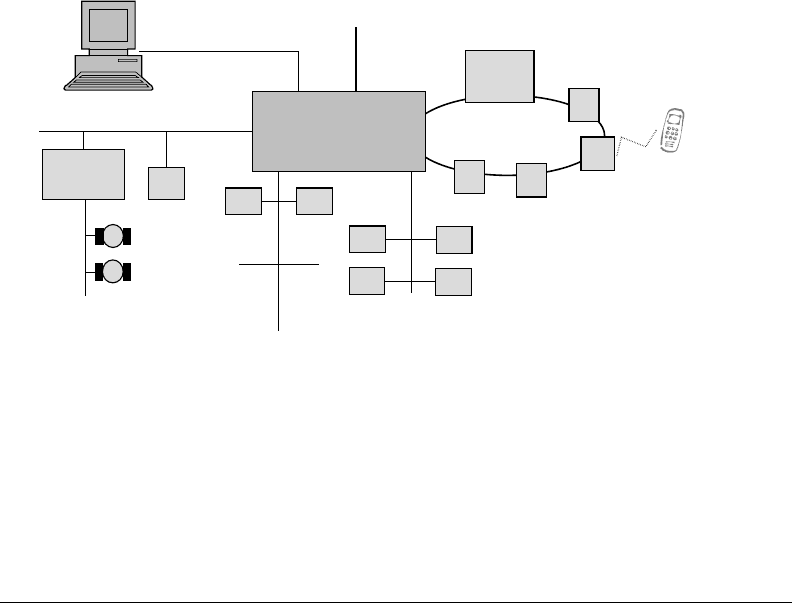
45-2 Industrial Communication Systems
Figure.45.1.shows.an.example.of.an.automotive.communication.architecture.with.a.central.gateway..
Here,.LIN.controls.the.damper.motors.of.the.air-conditioning.system..e.LIN.specication.denotes.
aLIN.subbus.as.a.LIN.cluster.
45.2 LIN History and Versions
In.the.summer.of.1999,.the.rst.version.[LIN1.0].of.the.LIN.specication.package.was.published..
It.contained.specication.information.to.describe.a.full.network.including.the.parts.protocol,.the.
physical.layer,.and.the.application.program.interface..It.also.specied.the.conguration.language.
description.(CLD).with.which.a.LIN.cluster.can.be.described.in.a.LIN.description.le.(LDF)..is.
specication.package.enforced.a.development.workow.to.allow.the.ecient.development.of.a.LIN.
cluster,.where.all.the.communication.parameters.of.a.LIN.cluster.are.dened.in.the.LDF,.which.is.also.
machine.readable.
e
.LIN.Consortium.was.constituted.in.March.2000.at.the.SAE.congress.in.Detroit..Version.1.1.of.
the.LIN.specication.was.released.in.April.2000,.followed.by.version.1.2.in.November..Both.versions.
contained.only.editorial.modications..e.next.important.step.was.the.release.of.the.version.1.3.
[LIN1.3].in.November.2002,.which.made.LIN.more.versatile..Version.2.0.[LIN2.0].realized.a.compre-
hensive
.expansion.of.the.LIN.standard,.although.it.retained.backward.compatibility.with.previous.
versions..One.of.the.main.innovations.of.LIN2.0.was.the.introduction.of.the.so-called.o-the-shelf.
slave.nodes..LIN.slave.nodes.can.be.simply.integrated.into.a.new.cluster.without.any.modications.
to. the.slave.nodes.. To.allow. this. concept.to.be.supported. by.appropriate. network.dening. tools,.
LIN2.0.species.the.slave.node.conguration,.which.allows.the.assignment.of.a.node.address.(NAD).
and.frame.identiers..It.also.denes.the.syntax.of.the.node.capability.le.(NCF),.which.contains.all.
parameters.of.the.o-the-shelf.slave.nodes,.using.the.node.capability.language.description.(NCLD)..
ese.features.allow.plug-and-play.functionality.to.be.used.in.a.LIN.cluster..Figure.45.2.illustrates.
the.interaction.
e
.latest.LIN.version.2.1.[LIN2.1].was.released.in.November.2006..Mainly,.the.document.has.a.bet-
ter
.structure.and.mostly.contains.clarications.on.the.functionality..But.there.are.also.some.specic.
modications,.including.diagnostic.and.conguration.classes.for.the.slave.nodes.
Central gateway
Body CAN 500 kbps
FlexRay
10 Mbps
Powertrain CAN
500 kbps
LIN
19.2 kbps
Diagnostic CAN/K-line
500 kbps (ODB)
Dashboard CAN
500 kbps
Navigation
Phone
Mobile phone
Air
condition
(LIN master)
Bluetooth
3 Mbps
Receiver
MOST
25 Mbps
Infotainment
HMI
M
M
FIGURE 45.1 Automotive.communication.architecture.with.a.central.gateway.
© 2011 by Taylor and Francis Group, LLC
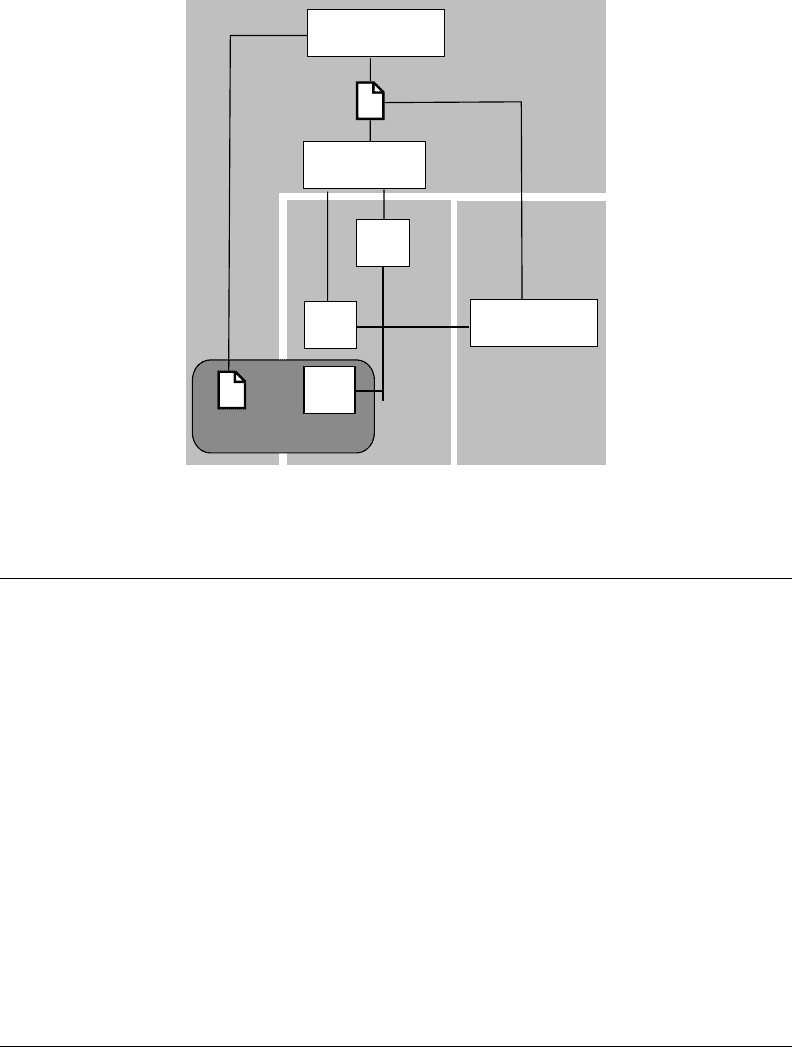
LIN-Bus 45-3
45.3 Communication Concept
LIN.uses.the.master–slave.principle.for.the.medium.access.control.feature..is.principle.allows.master.
and.slave.nodes.to.be.implemented.with.minimal.hardware.resources..e.master.node.is.usually.imple-
mented
.in.a.control.unit.or.in.a.gateway.that.possesses.the.necessary.resources.
e
.specication.also.denes.a.master.task.and.a.slave.task..e.master.task.initiates.every.commu-
nication.
.A.message.will.always.consist.of.a.header.generated.by.the.master.task.and.a.response.from.
the.slave.task..As.the.master.node.should.also.be.able.to.send.messages.to.the.slave.nodes,.along.with.
the.master.task.a.slave.task.can.also.be.integrated.into.the.master.node.(see.Figure.45.3).[Grz05]..is.
provides.the.possibility.of.integrating.several.slave.tasks.onto.a.hardware.platform.
e
.LIN.communication.scheme.is.based.on.the.producer–consumer.model..erefore,.the.specica-
tion
.denotes.the.transmitter.as.the.“publisher”.of.the.message.and.the.receiver(s).as.“subscriber(s).”.LIN,.
like.CAN,.uses.identiers.to.uniquely.identify.a.message..As.well.as.a.point-to-point.communication.
scheme,.multicast.and.broadcast.communication.schemes.are.also.supported..Figure.45.4.shows.the.
three.possible.communication.relationships:
. a.. A.slave.module.responds.to.a.master.request
. b.. e.master.sends.a.message.to.one.or.more.slave.nodes
. c.. e.master.initiates.the.communication.between.two.slave.nodes
45.4 Physical Layer
It.was.a.goal.of.the.LIN.design.to.achieve.a.simplistic.wiring.topology..The.simple.single-wire.bus.
connects.to.each.node.in.the.cluster.and.switches.from.ground.to.battery-level.voltage.
e
.physical.layer.is.based.on.the.ISO.9141.standard.[ISO9141]..It.consists.of.the.bidirectional.single-
wire
.bus.line.(LIN).that.is.connected.via.a.pull-up.resistor.(R).and.a.diode.to.the.internal.supply.voltage.
(V
SUP
).via.a.transistor.(component.of.the.transceiver).to.the.ground.(GND).(see.Figure.45.5a)..e.diode.
LIN description
file (LDF)
System design
tool
LIN
System
generator
LIN analyzer/
emulator
Cluster design
Cluster
Debugging
Slave 1
Slave 2
Master
Node capability
files (NCF)
Off-the-shelf
slave node
FIGURE 45.2 Workow.with.o-the-shelf.slave.nodes.
© 2011 by Taylor and Francis Group, LLC
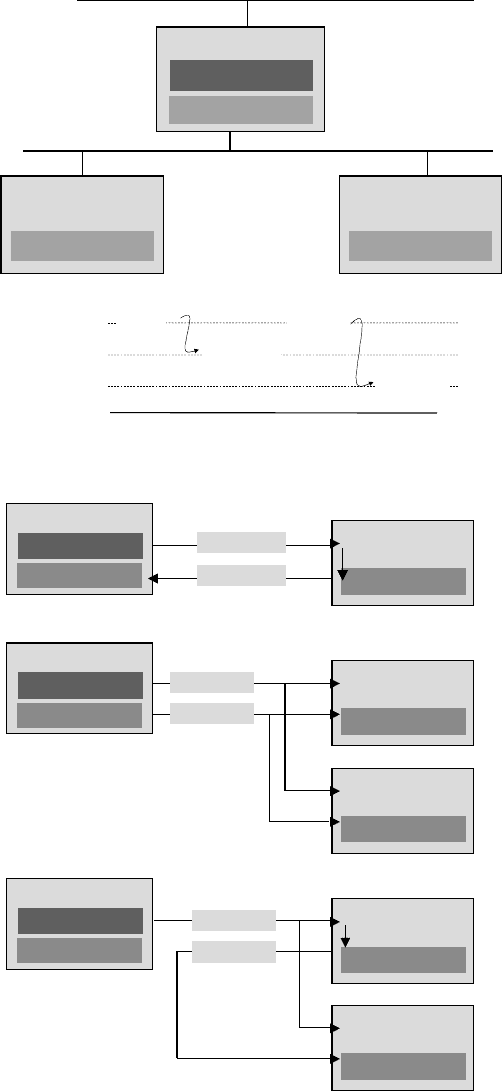
45-4 Industrial Communication Systems
LIN master task
LIN slave task
Master node
Slave node 2
Slave node 1
Lin-subbus
CAN
LIN slave task
LIN slave task
Master task header
time
Slave task node 1
Slave task node 2
header
response
response
FIGURE 45.3 Master–slave.concept.of.LIN.
Header
Response
LIN master task
LIN slave task
Master node
(a)
(b)
LIN slave task
Slave node 1
Header
Response
LIN master task
LIN slave task
Master node
LIN slave task
LIN slave task
Slave node 1
Slave node 2
Header
Response
LIN master task
LIN slave task
Master node
(c)
LIN slave task
LIN slave task
Slave node 1
Slave node 2
FIGURE 45.4 Communication.relationships.within.a.LIN.cluster:.(a).a.slave.responds.to.a.master’s.request,.
(b).the.master.sends.a.message.to.one.or.more.slaves,.and.(c).the.master.initiates.the.communication.betweeen.
the.two.slaves.
© 2011 by Taylor and Francis Group, LLC
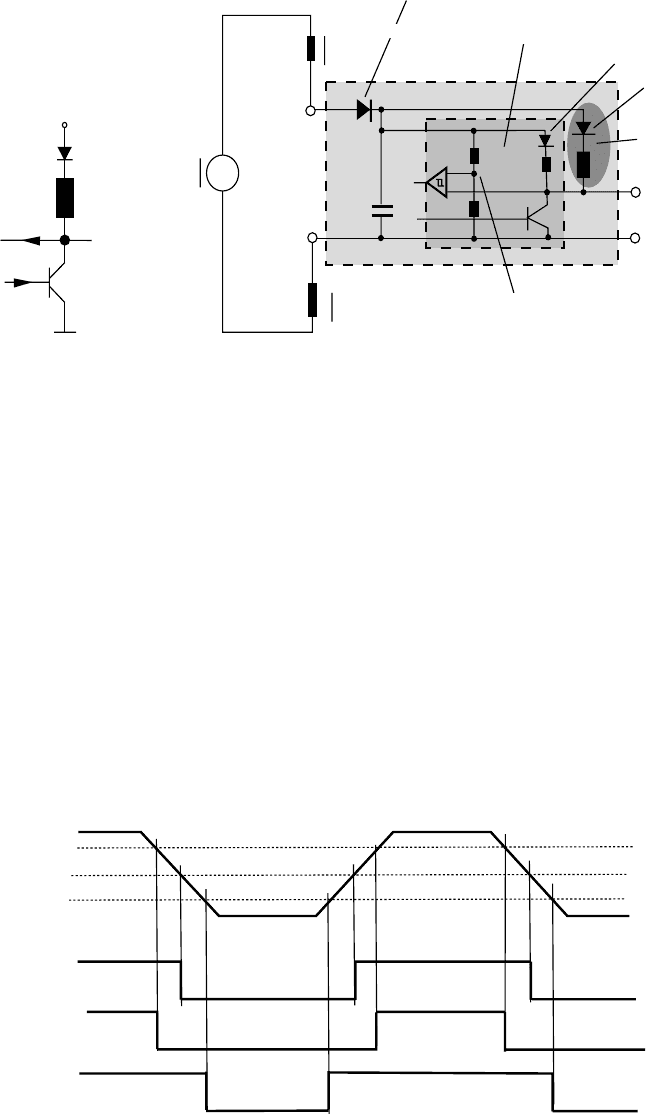
LIN-Bus 45-5
is.mandatory.to.prevent.uncontrolled.powering.of.the.node.from.the.bus.line,.in.the.case.of.a.battery.
loss,.that.is,.if.V
BAT
.is.disconnected.in.Figure.45.5b..e.pull-up.resistor.is.specied.at.30.kΩ.on.a.slave.
node.and.at.1.kΩ.on.a.master.node..e.baud.rate.is.specied.in.the.range.of.1–20.kbps.but.typical.baud.
rates.are.9.6.or.19.2.kbps,.or.10.4.kbps.according.to.SAE.J2602,.as.will.be.discussed.later.
45.4.1 Signal Specication
e.V
SUP
.and.GND.form.the.reference.potential.of.the.voltage.divider.to.determine.the.logical.value.of.a.bit..
A.voltage.level.below.40%.V
SUP
.represents.logical.0.and.a.level.above.60%.V
SUP
.represents.a.logical.1..e.
transmitter.has.to.ensure.that.the.receiver.receives.valid.voltage.levels..e.specication.does.not.dene.
transmitter.voltage.levels.
Because
.any.node.determines.the.logical.bit.values.in.reference.to.its.own.V
SUB
.and.GND,.a.dri.has.
an.impact.on.this.process.(see.Figure.45.6)..e.specication.margins.the.dri.of.V
BAT
.(V
Shi_BAT
).and.
GND.(V
Shi_GND
).at.about.10%..Note.that.V
SUP
,.seen.in.Figure.45.5b,.can.be.computed.as
.
V V V
SUP BAT D1
= −
.
(45.1)
Rx—max. duty
cycle
Rx—50% duty
cycle
Rx—min. duty
cycle
LIN signal
FIGURE 45.6 Inuence.of.the.dri.
(a)
LIN
R
Rx
Tx
GND
SCI
V
SUP
GND
V
BAT
V
BATTERY
V
Shift_GND
Only within
a master node
LIN node
Transceiver IC
Reverse battery protection
diode (D1)
Voltage divider
D
ser_int
D
ser_Master
V
Bus
(LIN)
1 K
30 K
V
SUP
Rx
Tx
(b)
V
Shift_BAT
FIGURE 45.5 (a).Basic.principle.of.the.physical.layer.according.to.ISO.9141..(b).Basic.structure.of.a.LIN.master.node.
© 2011 by Taylor and Francis Group, LLC
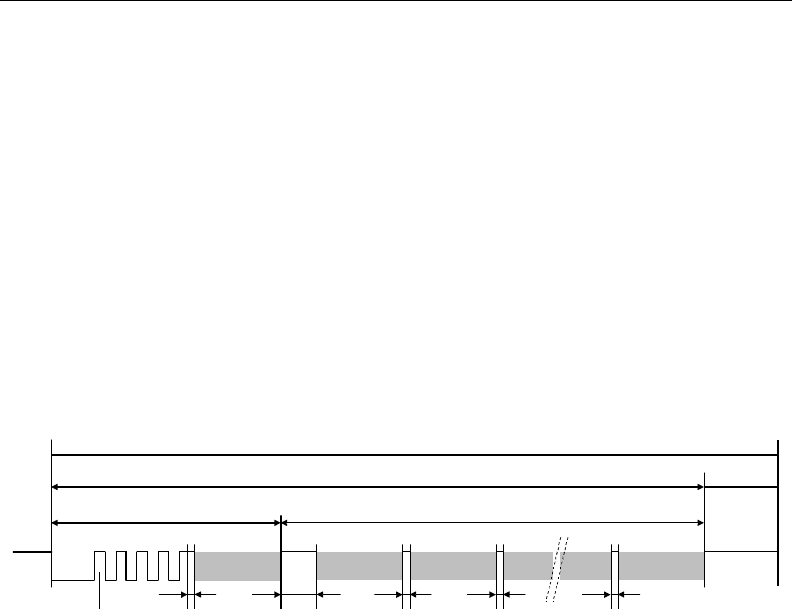
45-6 Industrial Communication Systems
e.duty.cycle.parameters.are.very.important.for.the.waveform.of.the.LIN.signal..ey.establish.
limits.that.ensure.the.correct.determination.of.the.logical.bit.value.for.the.serial.communication.inter-
face
.(SCI).of.the.receiver..ey.cover.the.issues.of.dri,.oscillator.tolerances,.and.asymmetries.of.
receiver.propagation.delay.rising.edge.with.respect.to.the.falling.edge.[TR0363].
45.4.2 topology
e.specication.does.not.regulate.the.wire.topology..One.can.use.a.line,.tree,.or.star.topology..However,.
the.length.of.the.bus.line.must.be.limited.to.40.m..e.eective.criterion.of.a.bus.line.is.the.RC.time.
constant.τ..It.covers.the.capacitances.and.loads.of.all.nodes.and.the.bus.line..e.RC.time.constant.must.
be.in.the.range.of.1–5.μs.
e
.number.of.nodes.in.a.LIN.cluster.should.not.exceed.16..Every.additional.node.lowers.the.network.
resistance.by.approximately.3%,.because.it.integrates.a.parallel.30.kΩ.resistor.and.can.cause.communi-
cation
.errors.under.worst-case.conditions.
However,
.although.the.LIN.baud.rate.is.slow,.the.large.voltage.swing.can.be.a.source.of.radiated.emis-
sions;
.therefore,.attention.must.be.paid.to.physical.wiring.design.and.layout.
45.5 LIN Message Frames
e.LIN.message.frame,.as.represented.in.Figure.45.7,.is.composed.of.a.header.and.a.message.eld,.
the.so-called.response..e.header.eld.consists.of.the.break.eld.(Synch_Break),.the.synch.byte.eld.
(Synch_Field),.and.the.identier.eld,.which.is.designated.as.the.protected.identier.(PID)..e.mes-
sage
.eld.(response).consists.of.the.data.eld.with.one.to.eight.data.bytes.and.the.checksum..All.elds.
except.the.break.eld.are.byte.oriented.and.can.be.generated.with.the.integrated.serial.interface.of.a.
microcontroller.
Message
.activity.is.coordinated.by.the.periodic.execution.of.the.LIN.message.schedule..For.each.
frame.slot,.the.master.task.transmits.a.frame.header.with.a.frame.identier.(ID)..All.slaves.evaluate.
the.frame.header,.and.a.slave.immediately.transmits.the.frame.response.that.is.associated.with.the.ID..
e.LIN.frame.is.the.combined.frame.header.and.response.
45.5.1 Break Field
A.synchronization.mechanism,.which.permits.slaves.without.stabilized.clock.frequencies.to.synchro-
nize
.themselves.from.the.master.clock,.is.implemented.in.the.protocol..e.break.eld.informs.the.
slaves.in.the.network.when.the.data.transmission.of.a.frame.starts..e.master.sends.a.zero,.13.bit.
Inter-byte
space
Data 1
Header
PID
Data 2
Data 3
Checksum
Response
Frame
Frame slot
Data N
Inter-byte
space
Inter-byte
space
Inter-frame
space
Idle
Idle
Inter-byte
space
Response
space
Break
eld
Break delimiter
>=1 bit
(recommend 2 bits)
Sync eld
FIGURE 45.7 LIN.message.frame.
© 2011 by Taylor and Francis Group, LLC

LIN-Bus 45-7
times,.followed.by.a.so-called.delimiter.that.must.be.at.least.1.bit.time.long.(2.bits.are.recommended)..
e.slav
es
.recog
nize
.this.break.aer.11.bit.time
s.
.is.recog
nition
.can.be.carr
ied
.out.with.the.break.
dete
ction
.featu
re
.of.a.stand
ard
.SCI..e.mast
er
.gener
ates
.a.break.sign
al
.that.is.abou
t
.two.bit.time
s
.lon-
ge
r
.to.ensu
re
.a.safe.sync
hronization
.to.the.mast
er
.clock
,
.for.slav
es
.with
out
.a.crys
tal.
45.5.2 Sync Byte Field
e.sync.byte.eld.follows.the.break.eld.and.supports.the.baud.rate.estimation..e.master.sends.a.
0x55.data.byte.on.whic
h
.the.slav
es
.sync
hronize
.them
selves.
.e.slav
es
.meas
ure
.the.time.peri
od
.betw
een
.
the.fall
ing
.edge.of.the.star
t
.bit.and.thos
e
.of.the.seve
nth
.data.bit..e.valu
e
.is.divi
ded
.by.8,.for.exam
ple,
.
by.simpl
y
.shi
ing
.the.meas
ured
.valu
e
.thre
e
.bits.to.the.righ
t.
.Only.the.fall
ing
.edge
s
.are.allo
wed
.to.be.
used.for.the.meas
urement
.of.the.baud.rate.beca
use
.they.are.consi
derably
.stee
per
.than.risin
g
.ones.and.
ther
efore
.prov
ide
.more.exac
t
.resu
lts.
.e.die
rent
.edge.stee
pness
.is.due.to.the.char
acteristics
.of.the.
physi
cal
.laye
r,
.as.the.bus.leve
l
.is.acti
vely
.draw
n
.to.“zer
o”
.leve
l
.by.a.tran
sistor,
.whil
e
.the.“one
”
.leve
l
.is.
rais
ed
.by.a.pul
l-up
.resi
stor.
When
.the.baud.rate.is.adju
sted
.on.a.stan
dard
.SCI.devi
ce,
.it.must.be.ensu
red
.that.it.does.not.devi
ate
.
by.mor
e
.tha
n
.the.all
owed
.2%.fro
m
.the.mas
ter
.clo
ck.
45.5.3 Identier
LIN.uses.a.message.ID.in.the.third.and.nal.byte.of.the.header..is.byte.consists.of.6.bits.for.the.ID.and.
two.par
ity
.bit
s,
.and.thu
s
.it.is.desi
gnated
.as.the.PID
.
.e.64.pos
sible
.IDs.are.sho
wn
.in.Tab
le
.45.
1.
Up
.unti
l
.versi
on
.1.3.of.the.LIN.spec
ication,
.bits.four.and.ve.of.the.ID.had.a.spec
ial
.mean
ing.
.When.
the.IDs.0–59.were.used.for.the.tran
smission
.of.signa
ls,
.bit.four.and.ve.den
ed
.the.numbe
r
.of.data.
byte
s,
.as.see
n
.in.Tab
le
.45.
2.
.is.tab
le
.doe
s
.not.exi
st
.for.LIN.ver
sion
.2.0.and.lat
er.
e
.impl
icit
.codi
ng
.of.the.data.leng
th
.in.the.iden
tier
.is.no.long
er
.obli
gatory
.since.LIN.versi
on
.1.2..
Now.a.eld.leng
th
.of.one.to.eigh
t
.data.byte
s
.is.possi
ble
.for.ever
y
.ID..e.eld.leng
th
.must.be.indi
cated
.
at.the.mes
sage
.de
nition
.in.the.sec
tion
.“Fr
ames”
.of.the.LDF
.
TABLE 45.1 Partitioning.of.the.Range.ofValues.
ofthe.“Prot
ected
.Ide
ntiers”
Identier Meaning
0x0–0x3B
.(0–59) Tra
nsmission
.of.signa
ls
0x3C
.(60) Ma
ster
.req
uest
.fram
e
.(MRF).for.the.
conguratio
n
.and.diag
nostics
0x3D
.(61) Sl
ave
.resp
onse
.fram
e
.(SRF).to.ID.0x3C
0x3E/0x3F
62/63
Reser
ved
.for.fut
ure
.expan
sions
.of.the.
prot
ocol
TABLE 45.2 Meaning.of.Bit.4.and.5.of.
the.Ide
ntiers
.(Ma
ndatory
.unt
il
.
Vers
ion1.2;
.Opt
ional
.fro
m
.Ver
sion
.1.3
;
.
Inva
lid
.fro
m
.Ver
sion
.2.0
)
ID5 ID4 Number.of.Data.Bytes
0 0 2
0 1 2
1 0 4
1 1 8
© 2011 by Taylor and Francis Group, LLC
